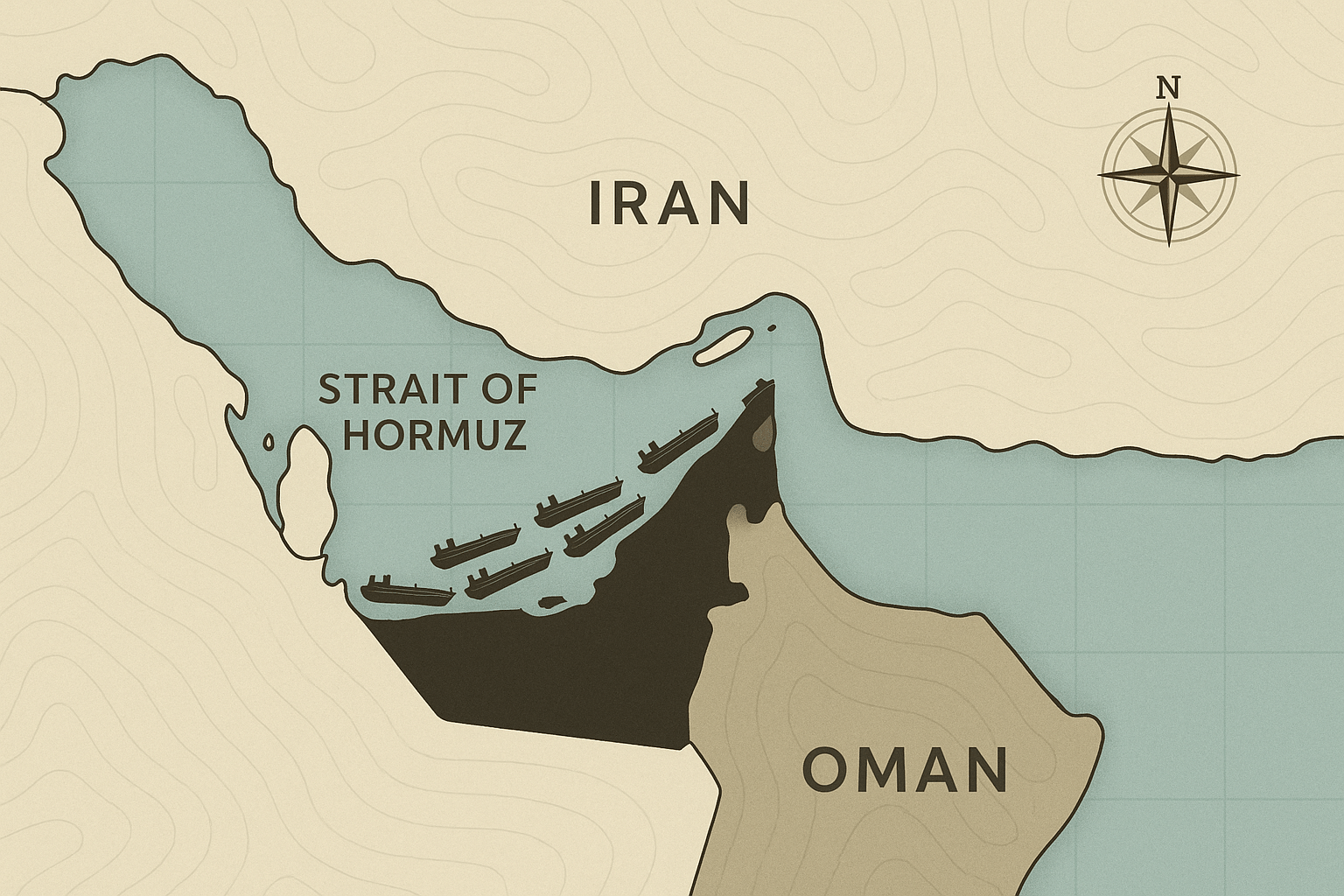The Geographical Pinch Point
To understand the Strait of Hormuz’s importance, one must first appreciate its physical geography. It is the only sea passage connecting the energy-rich Persian Gulf to the Gulf of Oman and, by extension, the open waters of the Arabian Sea and the Indian Ocean. It’s a geographical funnel, the sole maritime exit for the immense oil and gas reserves of the Gulf states.
The strait is shaped by the convergence of two landmasses. To the north lies the dramatic, mountainous coastline of Iran. To the south is the Musandam Peninsula, a rugged exclave belonging to the Sultanate of Oman, which is famously known as the “Norway of Arabia” for its stunning, fjord-like inlets (known as khors). The strait itself is dotted with several islands, most notably the Iranian islands of Qeshm, Hormuz, and Larak, which further constrict the navigable pathway.
While the strait is 21 miles wide at its narrowest point, the actual shipping lanes are even more constrained. To prevent collisions, internationally recognized Traffic Separation Schemes (TSS) dictate that tankers use two-mile-wide lanes—one for inbound traffic and one for outbound. This creates a predictable, but highly vulnerable, route for the world’s largest supertankers.
A Tale of Two Guardians: The Human Geography
The human geography of the strait is a story of two vastly different nations that share its coastline and, therefore, its strategic burden.
Iran: The Northern Power
Iran commands the entire northern coast of the strait, giving it immense strategic leverage. The port city of Bandar Abbas, located just north of the strait, is not only a major commercial hub but also the headquarters of the Iranian Navy and the Islamic Revolutionary Guard Corps Navy (IRGCN). This naval presence allows Iran to closely monitor, and potentially interfere with, all passing maritime traffic. The IRGCN, in particular, specializes in asymmetric warfare, utilizing a fleet of small, fast attack boats, anti-ship missiles, and sea mines that are well-suited for the strait’s confined geography.
Oman: The Southern Diplomat
On the southern side lies Oman’s Musandam Governorate. Geographically, it’s an exclave, separated from the rest of Oman by a slice of the United Arab Emirates (UAE). Its main city, Khasab, is a quiet regional center known more for tourism and fishing than military posturing. Oman has historically played the role of a neutral mediator in the turbulent politics of the Middle East. While it maintains its own naval forces and participates in joint patrols with international partners to ensure maritime security, its primary posture is one of de-escalation and diplomacy. This contrast between Iran’s assertive military stance and Oman’s quiet diplomacy is the defining human dynamic of the strait.
The River of Oil: Economic Geography
The numbers are staggering. Every day, approximately 21 million barrels of crude oil and refined petroleum products pass through the Strait of Hormuz. That’s equivalent to about 21% of global petroleum liquids consumption and nearly a third of all seaborne-traded oil. The countries that depend on this maritime artery read like a who’s who of global energy producers:
- Saudi Arabia (the world’s largest oil exporter)
- Iraq
- Iran
- United Arab Emirates
- Kuwait
- Qatar
Furthermore, the strait is not just about oil. Qatar, one of the world’s largest exporters of Liquefied Natural Gas (LNG), ships the vast majority of its product through this chokepoint, primarily to energy-hungry markets in Asia like Japan, South Korea, and China. Any blockage would immediately threaten the electricity supply and heating for millions of people.
While some countries have tried to build geographical workarounds, these alternatives are limited. Saudi Arabia has the East-West Pipeline to the Red Sea, and the UAE has the Abu Dhabi Crude Oil Pipeline to the port of Fujairah on the Gulf of Oman, bypassing Hormuz. However, the capacity of these pipelines is a fraction of the volume that travels through the strait by sea. For most Gulf producers, there is no viable Plan B.
A Cauldron of Tension: Why Disruption is a Constant Threat
The combination of immense economic value and tight geographical constraints makes the Strait of Hormuz a permanent geopolitical flashpoint. Its narrowness makes it relatively easy to disrupt. A single major incident—be it a military conflict, a terrorist attack, or even a major shipping accident—could halt traffic for days or weeks.
History is filled with examples of this tension. During the Iran-Iraq War in the 1_9_80s, the “Tanker War” saw both sides attack the oil shipping of the other, requiring U.S. naval convoys to protect vessels. In more recent years, Iran has seized foreign-flagged tankers and has been accused of attacking others, often in response to international sanctions or political pressure. In response, the U.S. Navy’s Fifth Fleet, based in nearby Bahrain, along with other international maritime forces, constantly patrols the region with a clear mission: to guarantee freedom of navigation.
A deliberate closure by Iran, though often threatened, would be an act of economic self-destruction, as its own oil exports depend on the strait. However, the ever-present risk is that a miscalculation or an escalation of regional conflicts could lead to a closure, intentional or not.
A World Held Hostage by Geography
If the Strait of Hormuz were to close, the global impact would be immediate and severe. Oil prices would skyrocket, likely doubling or tripling in a matter of days. This would trigger a surge in fuel and energy costs for consumers and businesses worldwide, potentially plunging the global economy into a deep recession.
The Strait of Hormuz is a powerful reminder that in our high-tech, interconnected world, we are still profoundly dependent on physical geography. This narrow, unassuming strip of water in the Middle East holds a disproportionate amount of power over the health of the global economy. Its calm waters belie the turbulent geopolitical currents that flow just beneath the surface, making it a place the world watches with bated breath.
